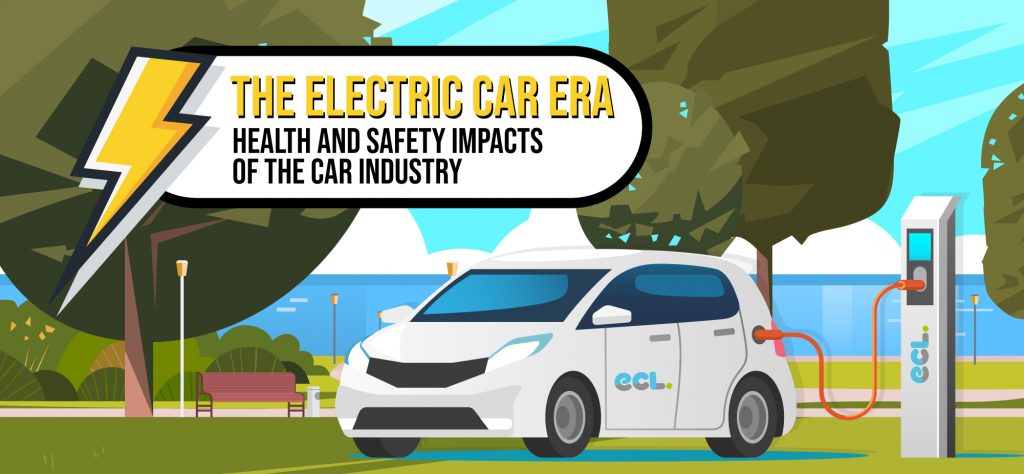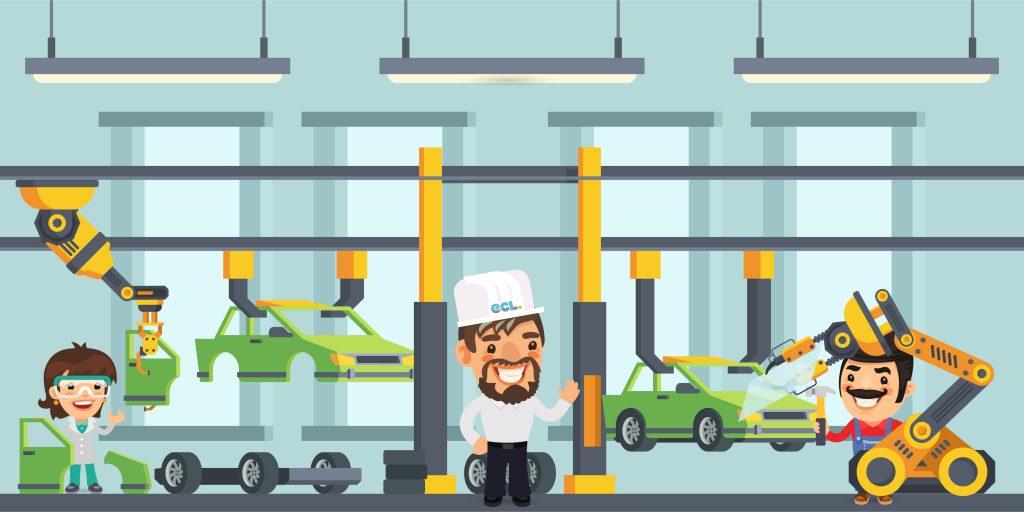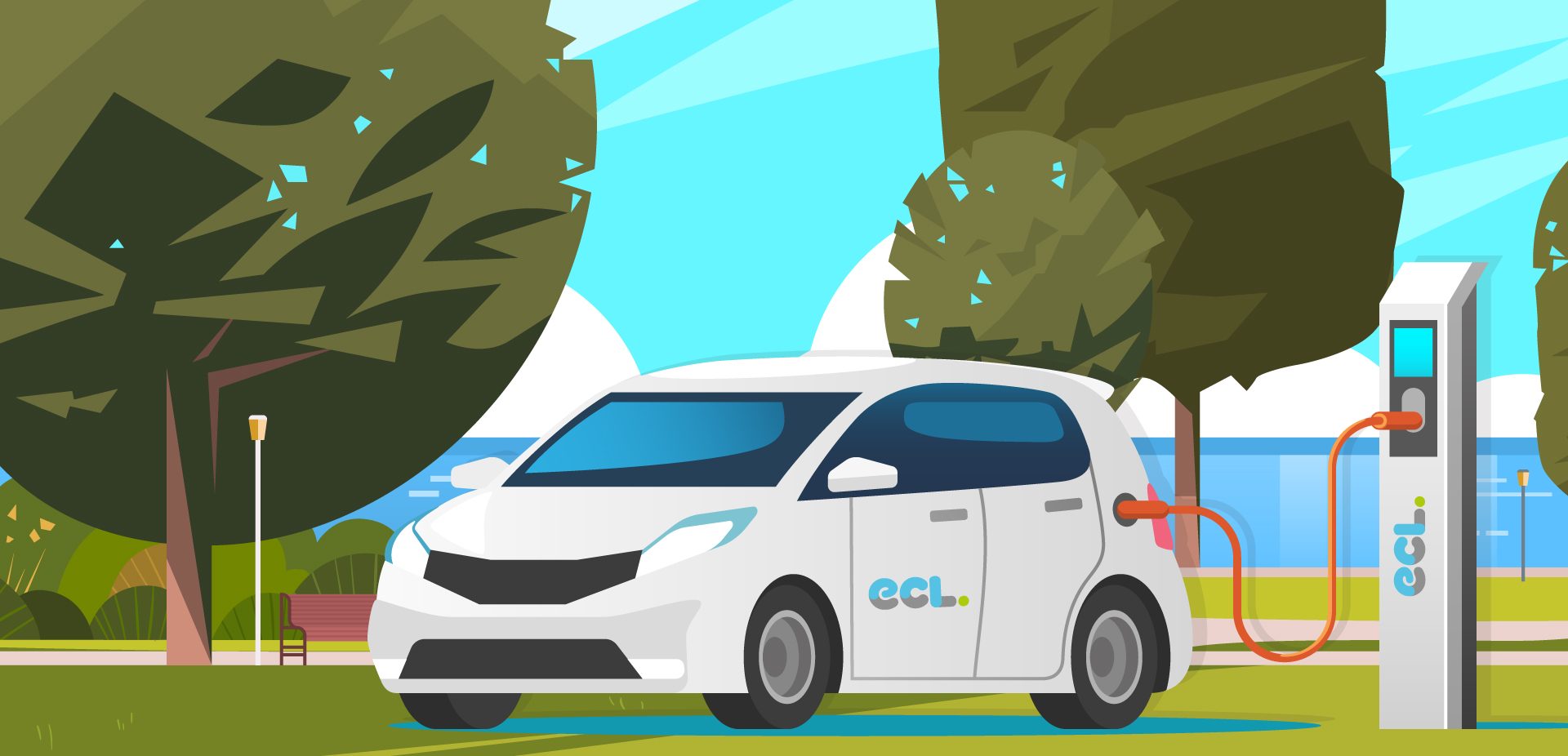The electric car era is upon us. With the increasing awareness of our need to become more sustainable and reduce our environmental impact, the use of electric and hybrid vehicles (E & HVs) is dramatically increasing.
It is just recently the government announced that all vehicles being produced and sold in the UK will need to be electric by 2030, with many car manufacturers aiming to produce only electric or at least hybrid cars by 2025.
Although car manufacturers are continuously changing and improving, this is a major change for the industry and there is significant investment projected for electric/hybrid car manufacturing in the UK. But this change comes with both known and unknown health, safety and environmental issues.
In this article, we will be looking at the possible employee health hazards within the car manufacturing sector.

The Car Manufacturing Process
The final version of the car you drive is produced from many manufacturing streams. Where one manufacturer can produce the engine, another can produce the door panels and another moulds the plastic interior, which in turn can be spray painted at another manufacturing site; whilst another manufacturer upholsters the seats.
Every one of these workplaces is bound by the Health and Safety at Work Act 1974 to protect people’s Health and Safety.
The following sections briefly talks about some areas of the car manufacturing streams and what potential hazardous substances you may experience.
Plastic Injection
Regardless of a new energy source coming from the electric car era. Plastics are still used throughout a car, in the dashboard, the panels of your doors and even parts of the engine cover. However, when manufacturing or processing plastics, this often uses and/or produces chemicals.
If you are using chemicals that can harm people’s health, or if chemicals are produced as a result of the process, it is important Understand What COSHH Is and to carry out relevant COSHH Assessments. This assessment should look at how the chemicals are being use, produced, or stored and how people could be exposed to the chemical. Are they inhaling the chemical. If so, it is important to understand how much of that hazardous substance that person is being exposed to. This can be undertaken through Occupational Exposure Monitoring and putting controls in place, one example of a control would be to install Local Exhaust Ventilation (LEV) to remove the hazardous substance.
Plastics are usually processed as pellets, granules or powders. But when this material is heated it is likely to release plastic fumes. This fume can cause respiratory sensitisation, irritation and some can be carcinogens.
Immediate effects may include severe irritation to the eyes, nose and lungs and in some case can be long-term and irreversible.
Here is a list of some plastics and what the fume they give of may contain:
- PVC can produce Hydrogen Chloride
- Fire-retarded ABS can produce styrene, phenol and butadiene
- Polypropylene can produce formaldehyde, acrolein and acetone
Spray Painting
To get that beautiful finish on your car, manufacturers use specific chemicals to produce such a result.
The Spray painting of cars and their parts can use different substances that may harm employees health. A major product of spray painting is the use of isocyanate-based two-pack paints.
It is important to conduct Isocyanate Monitoring as they can cause asthma and dermatitis as the main symptoms. Isocyanates can also trigger hypersensitivity, which means symptoms can persist long after exposure ends and may cause sensitivity to other substances.
Operators’ exposures should be reduced to as far below the WEL of 0.02mg/m3 (8hr TWA)) and 0.07mg/m3(15min STEL) as reasonably practicable.
HSE statistics reveal every year around 50 sprayers are diagnosed with isocyanate asthma and most have to leave the industry.
It is important to note that isocyanates continue to be used and are in almost all top-coats. It’s important to remember that even though a paint is ‘water-based’, this does not mean it is isocyanate-free. In addition, many manufacturers use solvent-based paints (also known as VOCs). Potential harmful solvents include toluene, xylene, white spirit, acetone and ethyl acetate.
Depending on the type of substance, these solvents can affect your health in different ways.
Some short-term effects are irritation of the eyes, lungs, skin, headaches, nausea, dizziness or light-headedness.
There can also be long-term effects from repeated exposure to particular solvents. These may include dermatitis and liver, kidney or neurological diseases.

Fabrication
Even though the way we drive cars in the electric car era may be changing. A wide range of dangerous fabrication technologies are still used by the car industry. And the materials used can vary too, from metals to composites.
These processes can often result in potential exposures to hazardous substances. Some major concerns with metal fabrication are exposures to Welding and Metal Fume from welding or metal laser-cutting process and Metalworking fluid Fume (Metal Working Coolant Fume) from CNC Machining.
Inhalation of welding fume can cause lung cancer, occupational asthma, welding fume fever. The inhalation of metalworking fume can cause lung diseases, such as occupational asthma and occupational hypersensitivity pneumonitis and skin contact can cause dermatitis.
It is important that fume from these processes are controlled and exposures are minimised to as low as reasonably practicable.
A common control seen, is to have LEV to remove the fume, but this of course needs to be maintained, used correctly and receive routine LEV Testing every 14 month according to HSG258 to ensure you meet LEV standards and for your system to be effective.
If the process is enclosed, which is often the case for CNC machines, it is important that operators leave the machine for a suitable amount of time for the fume to settle or be extracted before opening the enclosure to retrieve the item.
Other Health and Safety Impacts of The Car Industry To Consider
Hand-Arm Vibration
A major concern from most aspects of vehicle manufacturing and maintenance is the use of powered tools and the length and frequency these power tools are used.
Common power tools used in the car industry are grinders, sanders, impact wrenches and air chisels to name a few. These tools transmit vibration into the operator’s hands and arms.
It is important to ensure that workers are trained how to use all tools safely and they ensure they are properly maintained.
When selecting tools, you should consider tools that have been designed and constructed to reduce the risk of vibration and are suitable for their intended use.
Part of a Hand-Arm Vibration Assessment would be to determine a reasonable estimate of employee’s exposures. This can be using the Control of Vibration at Work Regulations. ECL can help you by monitoring the vibration the tool creates and assessing this.
Noise
Hopefully the electric car era can reduce the noise on the roads but excessive noise in car manufacturers and car repair shops is still a major concern, due to the heavy use of power tools.
Employers should ensure that tools used are properly maintained and are appropriate for the job to reduce any sound. But also have proper procedures and controls in place to reduce and negate peoples overall noise exposure.
Undertaking Workplace Noise Monitoring will allow you to know if you are appropriately controlling your employees exposure to noise.
Making The Electric Car Era A Safe Era
For all of the above reasons, it is therefore important to understand the products and processes that are being used and undertaken within car manufacturers and vehicle maintenance / garages and undertake Occupational Exposure Monitoring to determine your employees Workplace Exposure Limits to hazardous substances.
Our ECL experts can also help determine what needs to be monitored for by supplying the material safety data sheet (MSDS) for the hazardous substances used.
All ECL occupational hygiene services demonstrate compliance with Health & Safety best practice.
Call us on 01443 841760 or fill out our Enquiry Form for any queries regarding the health and safety impacts of the car industry or if you have any questions about any of our numerous Environmental Consultancy, Air Monitoring or Occupational Hygiene services.

